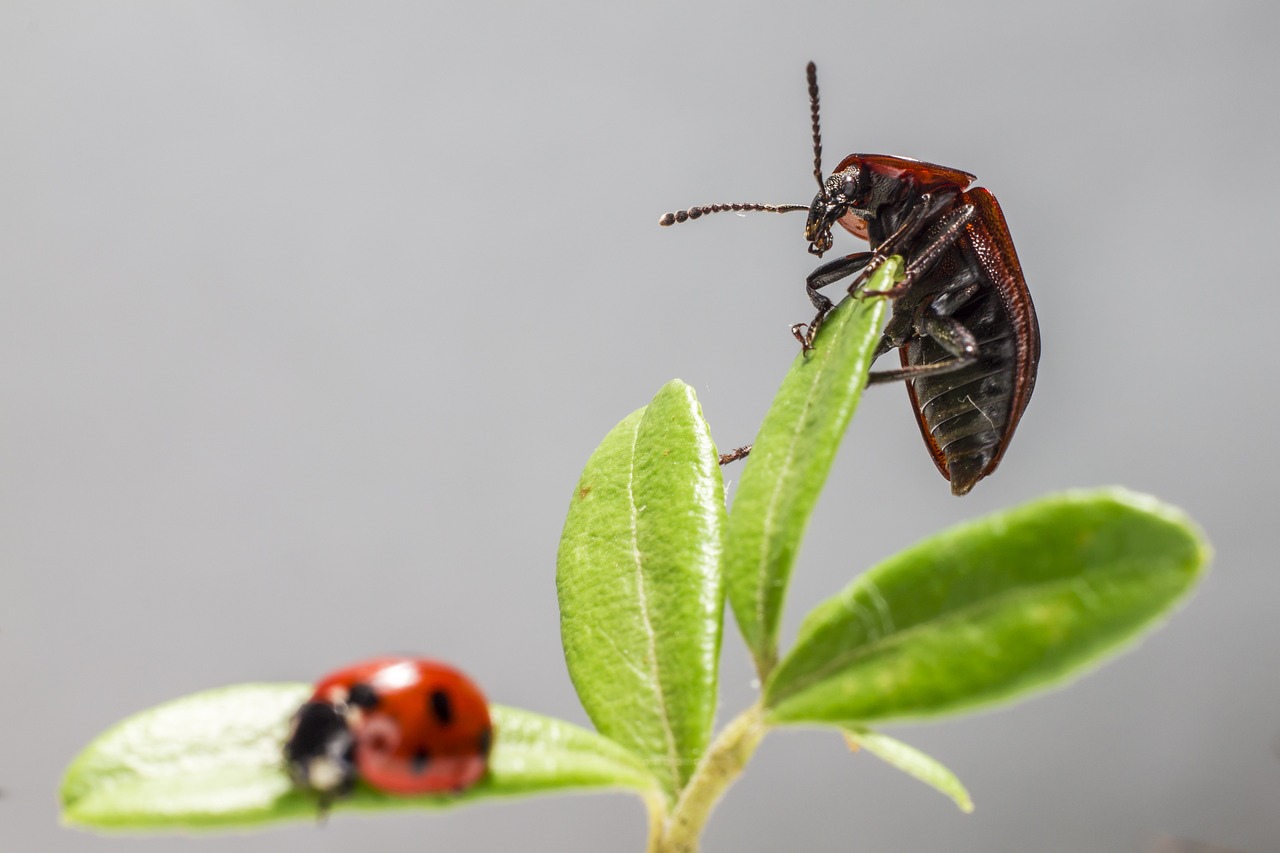The Seven-Spotted Ladybug (Coccinella septempunctata), also known as the seven-spot ladybird, is one of the most well-known and widespread species of ladybugs. Here is a detailed overview of this species:
Appearance
- Size:
- Adults are typically 7 to 10 millimeters in length.
- Coloration:
- Elytra (wing covers): Bright red or orange with seven distinct black spots, three on each wing cover and one central spot that straddles the two wings.
- Pronotum (area behind the head): Black with two white spots, giving it a distinct appearance.
- Legs and Underside: Usually black.
Habitat
- Preferred Habitats:
- Found in a wide range of habitats including gardens, forests, grasslands, agricultural fields, and urban areas.
- Geographic Range:
- Native to Europe but has spread to North America, Asia, and other parts of the world.
Behavior
- Feeding:
- Diet: Primarily aphids, but they also feed on other soft-bodied insects such as scale insects and mites.
- Hunting: Active predators, they search plants methodically for prey.
- Defensive Mechanisms:
- Reflex Bleeding: When threatened, they secrete a yellow fluid from their leg joints that has a foul taste to deter predators.
- Camouflage and Aposematism: Their bright colors serve as a warning to potential predators about their unpalatability.
Life Cycle
- Eggs:
- Laid in clusters on the undersides of leaves, often near aphid colonies.
- Larvae:
- Black with yellow or orange markings, resembling tiny alligators. They are also voracious predators of aphids.
- Pupae:
- Attach to leaves or stems where they undergo metamorphosis.
- Adults:
- Emerge from pupae and can live for about one year. They are most active in spring and summer.
Identification Tips
- Distinctive Spots: Look for the seven black spots on the red or orange wing covers.
- Pronotum Markings: The black pronotum with two white spots helps distinguish them from other ladybug species.
Ecological Role
- Pest Control: Essential for natural pest control as they consume large numbers of aphids and other plant pests.
- Food Web: Serve as prey for birds, spiders, and other larger insects.
Conservation Status
- Population: Generally stable and widespread.
- Threats: Pesticide use and habitat destruction can negatively impact local populations.
Conservation Efforts
- Habitat Preservation: Maintaining gardens and natural areas with diverse plant life supports their populations.
- Gardening Practices: Reducing pesticide use and planting a variety of plants to attract aphids and other insects can help support ladybug populations.
Human Interaction
- Beneficial Insects: Highly beneficial for controlling pest populations in gardens and agricultural fields.
- Cultural Significance: Often considered symbols of good luck and are popular in children’s literature and folklore.
Summary
The Seven-Spotted Ladybug (Coccinella septempunctata) is a highly recognizable and beneficial insect known for its distinctive coloration and important role in controlling pest populations. With its widespread presence and significant impact on aphid control, this ladybug species is a valuable ally in gardens and agricultural settings. By fostering habitats that support ladybug populations and adopting environmentally friendly gardening practices, we can help maintain the health and balance of our ecosystems.
Views: 791
Subscribe to the newsletter:
